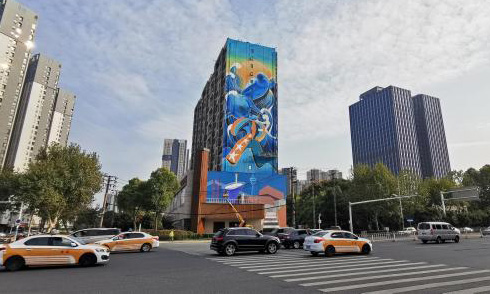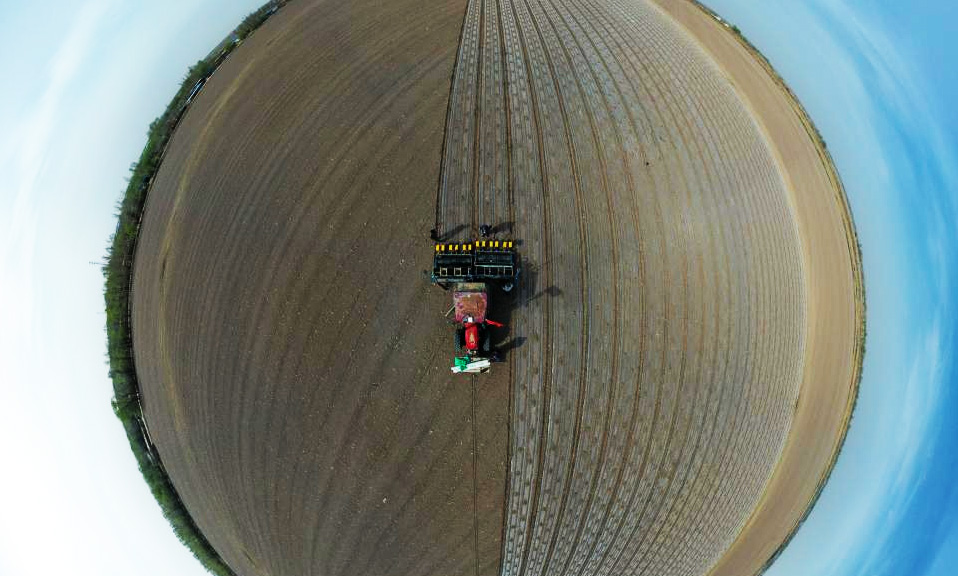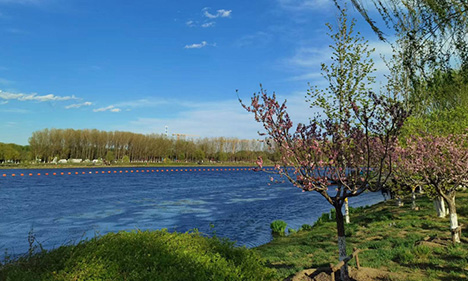Plateau roads pave way for Tibet's rural revitalization
LHASA, April 21 (Xinhua) -- Southwest China's Tibet Autonomous Region has built or renovated rural roads totaling 38,200 km since 2016, bringing the total length of rural roads in the plateau region to more than 90,000 km by the end of 2021, transportation authorities said Thursday.
From 2016 to 2021, the region poured 94.1 billion yuan (about 14.7 billion U.S. dollars) into more than 3,000 rural road construction projects, Feng Zhenzhong, an official with the regional department of transport, told a press conference.
During this period, 280 townships and 2,974 villages had been equipped with hardened roads. At present, all the 74 county-level areas have passenger bus lines, with 500 townships, or 73 percent of the region's total, enjoying passenger transportation services, Feng added.
More than 27,000 farmers and herders have been employed as rural road maintenance workers, with some 97 million yuan granted as subsidies for them.
Dargye Tsering, a villager from the rural area of Lhundrup County, said many of his fellow villagers are engaged in rural road construction and maintenance like him, earning more than 6,000 yuan a month.
"The income is stable, and by working nearby, I can return home to take care of my parents," said Dargye Tsering, 27.
Tibet has a vast landmass, harsh natural environment and poor transport connectivity due to historical reasons. The region has seen accelerated development in rural road construction and transportation in farming and pastoral areas over the past years.
At Zhentang, a border township in the city of Xigaze in the deep Himalayas, a new road with total spending of 718 million yuan was put into operation in 2020. Local Sherpas living along the road no longer have to carry heavy loads on their back to climb mountains.
"The road has not only made local transportation much easier but also brought tourists," said Tseten, an official with the township, adding that visitors from Sichuan, Jiangsu and other provinces drive there to enjoy the beautiful landscape and the Sherpa customs and culture.
Largely thanks to the tourism industry development, the per capita disposable income of the township surged to 11,805 yuan in 2021, up 10.5 percent compared with the previous year.
Nyima, a 52-year-old villager in the township, has renovated his store into a homestay. With eight beds provided, the homestay opened earlier this month.
"With more tourists set to come because of the better traffic, I'm confident that my homestay business is prospective," said Nyima.
Photos
 Young artist takes up brush to create lifelike paintings expressing mankind and nature’s harmonious co-existence
Young artist takes up brush to create lifelike paintings expressing mankind and nature’s harmonious co-existence Cutton farming in full swing in China's Xinjiang
Cutton farming in full swing in China's Xinjiang Spring scenery along section of Grand Canal in Beijing
Spring scenery along section of Grand Canal in Beijing New faces called up for Chinese national women's volleyball team while Zhu Ting missing
New faces called up for Chinese national women's volleyball team while Zhu Ting missing
Related Stories
Copyright © 2022 People's Daily Online. All Rights Reserved.






